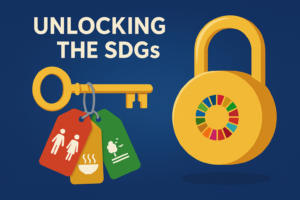Key Impact Points
- Investor demand for transparency: Investors now prioritize clear carbon emissions data in decision-making, driving the need for CFOs to act.
- Navigating complex frameworks: New regulations like the CSRD and IFRS S1/S2 require rigorous, standardized carbon reporting for long-term compliance.
- Challenges in data collection: CFOs must tackle fragmented carbon data across value chains, particularly for Scope 3 emissions, which are often the hardest to track.
Mastering Carbon Emissions Reporting in 2024
As the demand for a greener and more sustainable world intensifies, decarbonization has become a global priority. To align with the Paris Agreement’s goal of limiting temperature rise to 1.5°C, global greenhouse gas emissions must fall by 45% by 2030. Investors are increasingly focused on companies’ carbon emissions, urging organizations to disclose their impact and reduction plans.
However, carbon emissions measurement is complex, and many companies are struggling to meet their net-zero commitments. According to the 2023 Net Zero Tracker report, fewer than 5% of companies meet the basic criteria for net-zero targets. As Ewan Lamont, head of sustainability solutions at Indigo Agriculture, notes, “Sustainability has gone from a voluntary brand-building exercise to an absolute must-have.”
Understanding the GHG Protocol
At the core of carbon emissions reporting is the Greenhouse Gas (GHG) Protocol, the world’s most widely used emissions accounting standard. The GHG Protocol provides a standardized framework for measuring and reporting emissions, akin to financial accounting. Over 90% of Fortune 500 companies use this protocol, and it’s been a key driver in helping businesses align with global climate goals.
The GHG Protocol categorizes emissions into three main scopes:
- Scope 1 emissions: Direct emissions from company-owned sources, such as vehicle fleets and manufacturing processes.
- Scope 2 emissions: Indirect emissions from purchased energy, like electricity or heating.
- Scope 3 emissions: Indirect emissions from upstream and downstream activities, such as supply chains, employee commutes, and product end-use.
Change the World - Subscribe Now
Scope 3 emissions are particularly complex, encompassing a wide range of external activities and 15 categories that extend beyond a company’s direct control.
Why CFOs Should Prioritize Carbon Emissions Disclosure
For CFOs, carbon emissions reporting is becoming increasingly critical. Here’s why:
- Satisfying investor demand: With ESG becoming a key factor in investment decisions, investors want transparent, reliable emissions data. According to a Morgan Stanley report, 77% of investors are interested in funds that combine financial returns with positive environmental impact.
- Adhering to new regulations: Frameworks like the Corporate Sustainability Reporting Directive (CSRD) and IFRS S1 and S2 emphasize carbon reporting, focusing on how environmental risks affect financial performance.
- Protecting corporate reputation: Transparent emissions reporting enhances a company’s sustainability credentials, with executives attributing up to 63% of their company’s market value to reputation.
Related Article: WEF: Nine solutions for Cities to Cut Carbon Emissions in Construction
The Challenges of Carbon Emissions Reporting
While essential, carbon emissions reporting presents several challenges for CFOs:
- Data availability: Carbon data is often spread across different departments, systems, and external suppliers, making it difficult to gather and consolidate.
- Data quality and consistency: Ensuring accurate data across international operations and complex value chains is a significant hurdle.
- Complex value chains: Scope 3 emissions are notoriously hard to track, requiring granular data on everything from employee commutes to supply chain logistics.
- Multiple calculation methods: The GHG Protocol offers various methods for calculating emissions, particularly for Scope 3. This flexibility can add complexity, as organizations choose between spend-based, supplier-specific, or average-data methods.
Conclusion
For CFOs, prioritizing carbon emissions reporting is no longer optional. As regulations evolve and investors demand transparency, mastering carbon accounting and tackling the complexities of Scope 3 emissions are critical steps in shaping a company’s sustainable future.












